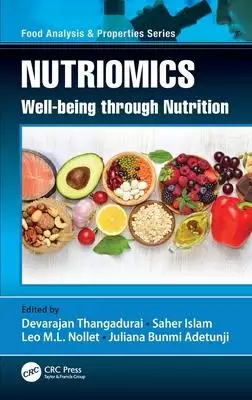chemical labeling in的問題,透過圖書和論文來找解法和答案更準確安心。 我們找到下列懶人包和總整理
chemical labeling in的問題,我們搜遍了碩博士論文和台灣出版的書籍,推薦寫的 Nutriomics: Well-Being Through Nutrition 和的 Chemical Microbiology, 664都 可以從中找到所需的評價。
這兩本書分別來自 和所出版 。
國立陽明交通大學 材料科學與工程學系所 韋光華所指導 呂弈均的 以一步驟表面電漿誘發剝離法製備氮摻雜碳化鉬/石墨烯奈米片複合材料及其性質和產氫催化性能 (2021),提出chemical labeling in關鍵因素是什麼,來自於表面電漿誘發剝離法、碳化鉬、石墨烯奈米片、複合材料、電催化產氫。
而第二篇論文國立陽明交通大學 材料科學與工程學系奈米科技碩博士班 韋光華所指導 宋家維的 以單步驟表面電漿誘發剝離法製備氮摻雜二硫化鉬/石墨烯奈米片之複合材料及其性質與產氫催化的應用 (2021),提出因為有 二硫化鉬、複合材料、氮摻雜、產氫催化反應、石墨烯的重點而找出了 chemical labeling in的解答。
Nutriomics: Well-Being Through Nutrition

為了解決chemical labeling in 的問題,作者 這樣論述:
Implementation of robust omics technologies enables integrative and holistic interrogation related to nutrition by labeling biomarkers to empirically assess the dietary intake. Nutriomics: Well-being through Nutrition aims to enhance scientific evidence based on omics technologies and effectivene
ss of nutrition guidelines to promote well-being. It provides deep understanding towards nutrients and genotype effects on disease and health status. It also unveils the nutrient-health relation at the population and individual scale. This book helps to design the precise nutritional recommendations
for prevention or treatment of nutrition-related syndromes.Nutriomics: Well-being through Nutrition focuses on: The impact of molecular approaches to revolutionize nutrition research for human well-being Various biomarkers for bioactive ingredient analysis in nutritional intervention researchPotent
ial of transcriptomic, genomic, proteomic, metabolomic, and epigenomic tools for nutrition care practicesRecent updates on applications of omics technologies towards personalized nutritionProviding comprehensive reviews about omics technologies in nutritional science, Nutriomics: Well-being through
Nutrition serves as an advanced source of reference for food developers, nutritionists, and dietary researchers to investigate and evaluate nutriomics tools for development of customized nutrition and food safety. It is also a useful source for clinicians and food industry officials who require inte
nse knowledge about emerging dietary-related tools to revolutionize the nutrition industry.This is a volume in the Food Analysis and Properties series, a series designed to provide state-of-art coverage on topics to the understanding of physical, chemical, and functional properties of foods.
以一步驟表面電漿誘發剝離法製備氮摻雜碳化鉬/石墨烯奈米片複合材料及其性質和產氫催化性能
為了解決chemical labeling in 的問題,作者呂弈均 這樣論述:
在此論文中,講述運用一步驟表面電漿誘發剝離法,製備碳化鉬/石墨烯奈米片複合材料和氮摻雜碳化鉬/石墨烯奈米片複合材料,探討碳化鉬和石墨烯奈米片的比例對表面形貌、材料性質和其應用於電催化產氫中的催化劑表現,並以前者最佳催化表現的比例進行氮摻雜探討異質摻雜對表面形貌、材料性質和其應用於電催化產氫中的催化劑的影響。一步驟表面電漿誘發剝離法是先以石墨紙為基材製備雙層電極,再將雙層電極接到陰極、1M硫酸為電解液,通以70伏特的電壓,在陰極尖端會產生電漿並從雙層電極上剝離複合材料到電解液中,再把電解液抽氣過濾即可得到產物。使用SEM和TEM觀察碳化鉬/石墨烯奈米片複合材料的呈現互相交疊的情形,碳化鉬表面變
崎嶇、尺寸變小,石墨烯奈米片則呈現奈米片狀結構;以EDS和XPS分析可以得知添加氮源可對複合材料中的碳化鉬進行氮摻雜;透過拉曼光譜儀可以得知複合材料中的石墨烯奈米片為少層數;以XRD對材料進行分析和文獻比對後可以得知複合材料中的碳化鉬為beta相結構;把材料以一定比例塗在碳玻璃電極上進行電化學量測,透過LSV量測可得知碳化鉬/石墨烯奈米片複合材料中的最佳過電位是GM-300,數值為247mV,氮摻雜碳化鉬/石墨烯奈米片複合材料中最佳過電位是GM-N50,數值為185mV。塔弗曲線圖中,碳化鉬/石墨烯奈米片複合材料中的塔弗斜率最好的是GM-300,數值為86(mV/dec),氮摻雜碳化鉬/石墨烯
奈米片複合材料中斜率最好的是GM-N50,數值為70(mV/dec)。一步驟表面電漿誘發剝離法能成功同時複合材料進行剝離和異質摻雜,而且此製程有著快速、便宜和單步驟完成製程等優勢,是一項具有研究潛力的製程,未來可以替換其他產氫催化材料進行複合材料的研究。
Chemical Microbiology, 664

為了解決chemical labeling in 的問題,作者 這樣論述:
Clinical Microbiology, Volume 664 in the Methods in Enzymology series, highlights new advances in the field with this new volume presenting interesting chapters on a variety of topics, including Synthesis of chemical probes to study bacterial adenylating enzymes, Fluoroquinolone-derived fluoresce
nt probes for studies of bacterial penetration and efflux, Combining informatics with ABPP to identify serine hydrolyses in bacteria, A Ligand Selection Strategy Identifies Chemical Probes Targeting the Proteases of SARS-CoV-2, Activity-based probes for bacterial histidine kinases, Metabolomic appro
aches to enzyme function and pathway discovery, Identification of bile salt hydrolase activity in gut microbiota, and much more.Other chapters cover Multiplex fluorescence screening and identification using multiplex TMT, Customized Peptidoglycan Surfaces to Investigate Innate Immune Recognition via
SPR, Site-Specific Siderocalin Binding to Ferric and Ferric-Free Enterobactin As Revealed by Mass Spectrometry, Proteomics of short-chain fatty acid probes in Salmonella, Development and application of highly sensitive labeling reagents for amino acids, and a variety of other timely topics.
以單步驟表面電漿誘發剝離法製備氮摻雜二硫化鉬/石墨烯奈米片之複合材料及其性質與產氫催化的應用
為了解決chemical labeling in 的問題,作者宋家維 這樣論述:
本論文使用單步驟表面電漿誘發剝離法製備二硫化鉬/石墨烯與氮摻雜二硫化鉬/石墨烯之奈米複合材料。由於二硫化鉬本身導電性質不佳、循環穩定性不足;而石墨烯材料能提供導電性作為輔助,因此首先探討二硫化鉬及石墨烯奈米片的配比研究。藉由各種配比的奈米複合材料,其表現出的表面性質、材料特性及電催化產氫能力,來找出最佳化的二硫化鉬/石墨烯奈米片複合材料。再將前者最佳配比的複合材料進行氮摻雜製程,此目的是研究氮摻雜對於二硫化鉬/石墨烯奈米片複合材料的材料性質變化,包含表面形貌、材料結構、材料晶格還有電催化產氫能力的影響。單步驟表面電漿誘發剝離法是將二硫化鉬材料塗層在石墨紙上來當作陰極,使用1M硫酸電解液,在通
以60伏特的電壓下會產生電漿,進行電化學剝離時,能同時剝落出石墨烯與二硫化鉬奈米片。製備複合材料後進行各種材料分析儀器的研究,從SEM、TEM能觀察表面形貌外觀;拉曼光譜分析石墨烯與二硫化鉬奈米片的層數、缺陷程度;使用XPS對樣品做氮元素上的材料分析;藉由XRD訊號觀察剝離前後晶格的變化。而透過LSV能量測材料作為電化學產氫催化的能力,實驗發現在二硫化鉬/石墨烯複合材料中,Gm-500的表現最佳,過電位值????10為280mV,再進行氮摻雜製程之後,Gm-500N之過電位值????10能明顯下降至240mV,具備更佳的電化學催化能力。單步驟表面電漿誘發剝離法能安全且快速地產生奈米複合材料,並
藉由異質摻雜的製程能有效進行各種產氫催化的研究。